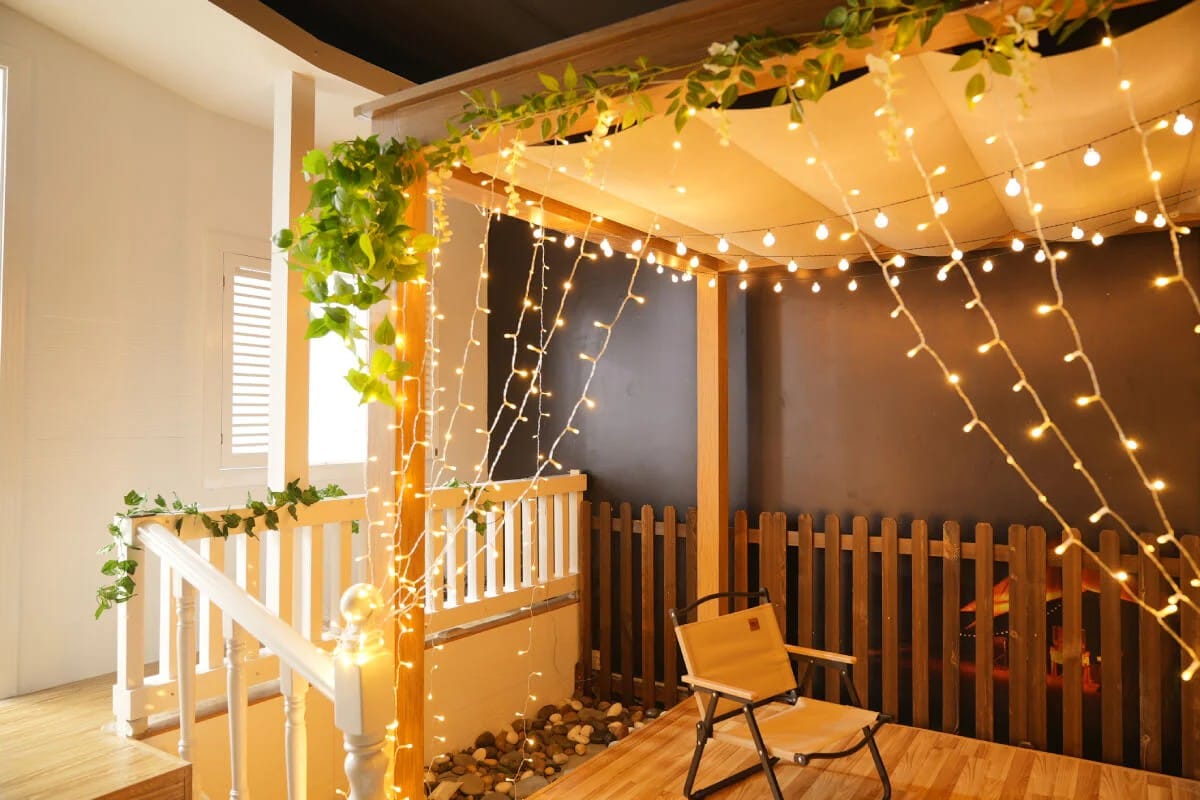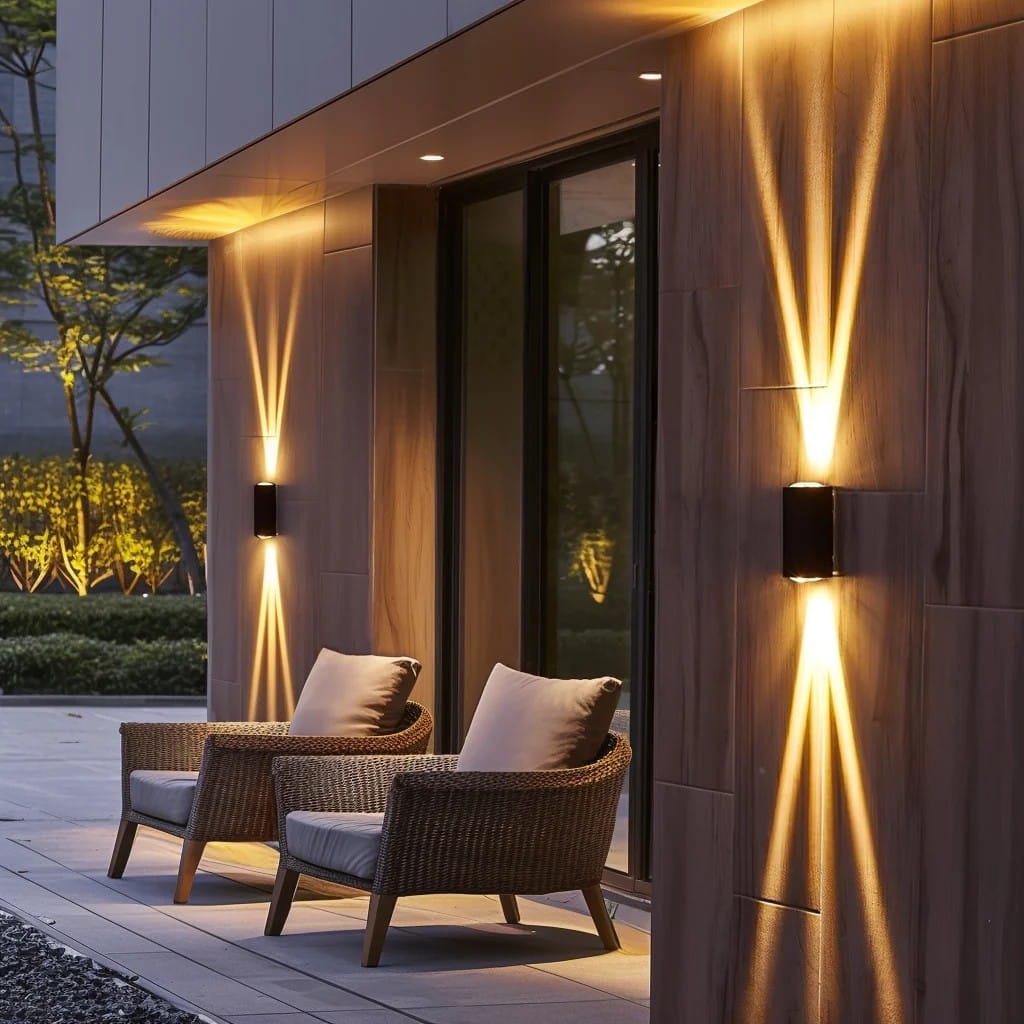
Light Installation in UAE for Homes, Villas, and Shops
Table of Contents
Lighting can completely change how a place looks and feels. No doubts!
Whether you’re decorating a cozy apartment in Downtown Dubai, enhancing your private villa in Emirates Hills, or opening a stylish shop in Abu Dhabi, proper lighting isn’t just decorative—it’s REALLY essential.
But with so many options—wall lights, solar installations, LED strips, and emergency lighting—how do you choose and install the right setup?
In the UAE, light installation is a bigger “issue” than many realize. Ask homeowners or villa owners, and they will tell you how it’s an annoying, tedious process.
From energy efficiency to luxurious ambiance, we will try to examine all aspects of lighting installations across residential and commercial spaces.
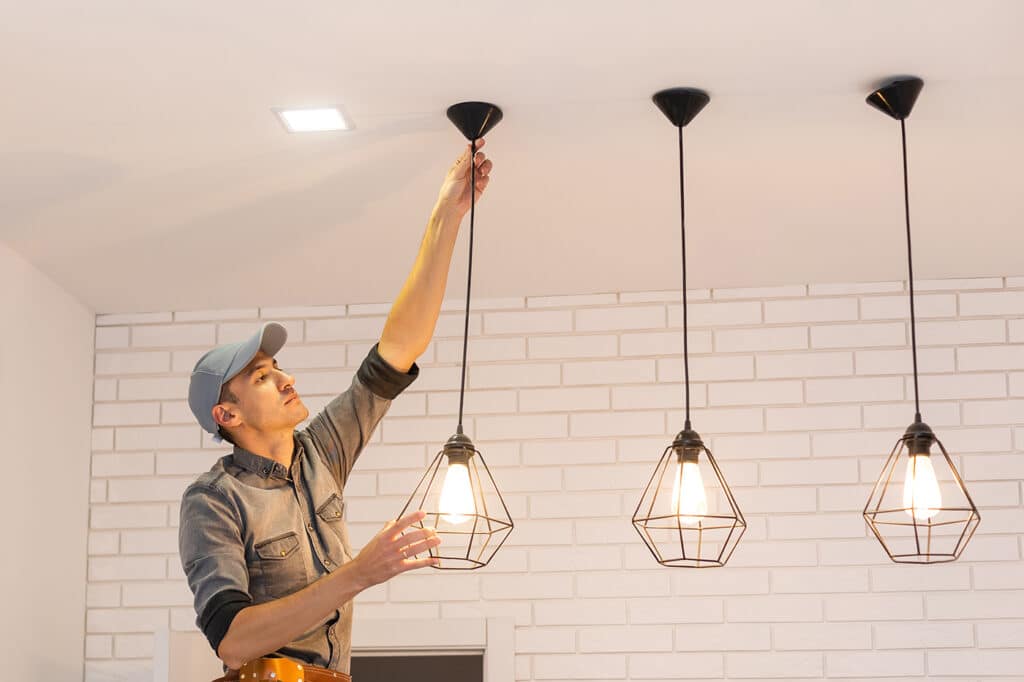
Light Installation in UAE
“Do it yourself (DIY)” might save money, but improper wiring can lead to safety hazards (especially in humid areas) or void warranties on high-end fixtures.
Lighting in the UAE goes far beyond utility. Motion sensors, app-controlled dimmers, and voice-activated systems are huge in UAE homes and businesses. And of course, these things require proper installation.
Because of the region’s climate, architecture, and regulations, certain considerations make light installation unique compared to other parts of the world.
Climatic & Environmental Challenges
UAE homes and businesses experience high ambient temperatures (especially in summer months exceeding 45°C), frequent dust storms, and salt-laden air in coastal areas. Therefore:
- Fixtures must be heat-resistant and corrosion-proof.
- Outdoor lighting needs to be rated IP65 or higher for dust and water protection.
- Low-voltage and solar-powered options are becoming more common to reduce energy costs.
Popular Lighting Types
- LED lighting dominates installations due to longevity (up to 50,000 hours) and energy savings.
- Smart lighting systems, integrated with Alexa, Google Home, or proprietary apps, are gaining traction in new homes.
- Architectural lighting, such as recessed LEDs or hidden coves, is popular in villas and malls for ambient enhancement.
Regulations
- The Dubai Green Building Regulations and Estidama in Abu Dhabi encourage energy-efficient lighting systems.
- Any installation must comply with DEWA or ADDC codes for electrical safety.
- Commercial buildings must include emergency exit lighting systems per UAE Fire and Life Safety Code of Practice.
Wall Light Installation
Wall lighting is commonly used in both indoor and outdoor applications in the UAE, especially in villas, staircases, building exteriors, and luxury hotels.
In interiors, Decorative Wall Lights is installed for:
- Ambient lighting in living rooms or bedrooms
- Accent lighting to highlight artwork or textured walls
- Task lighting for mirrors, reading nooks, and hallways
Installation Process
- Location Planning: Wall lights should be installed at about 5–6 feet above floor level.
- Surface Prep: UAE homes often use concrete or marble walls, so installers use core drills and chemical anchors for stability.
- Wiring: Use shielded copper wires, and where exposed, place in PVC conduit.
- Safety Checks: A Miniature Circuit Breaker (MCB) is mandatory for all lighting circuits.

Outdoor Wall Lighting
These lights are especially important for villa facades and compound walls. Exterior Pendant Light Fixtures and Outdoor wall lights should:
- Be IP-rated (IP65 or higher).
- Feature heat-resistant materials like aluminum or polycarbonate.
- Use motion sensors or photocells for automatic operation.
Installation Process
Installing outdoor wall lighting in the UAE involves a few essential steps to ensure safety, durability, and a sleek finish, especially given the region’s heat, dust, and humidity.
- Start by turning off the power, then mount your weather-rated fixture on a solid surface like concrete or stucco.
- Use proper outdoor-rated wiring, ensure secure electrical connections (black to black, white to white, green to ground), seal the fixture with silicone caulk (except the bottom for drainage), and test your light with a suitable LED bulb.
- Always choose IP65+ fixtures for weather resistance.
How to Install Solar Lights?
Given the UAE’s sunshine-rich environment, solar lighting is booming, especially in low-light areas like gardens, remote pathways, farms, and parking spaces.
Benefits
- No reliance on grid electricity.
- Lower operating costs.
- Eco-friendly and compliant with the UAE Vision 2030 sustainability goals.
Installation Process
- Choose the Right Location: Unobstructed exposure to sunlight for at least 6–8 hours daily.
- Panel Orientation: Set panels at a 30–45° tilt angle, facing true south.
- Mounting: Fix lights using galvanized brackets to prevent corrosion.
- Battery Placement: Secure and ventilate the battery compartment, ideally in shaded areas.
- Connection: Most lights are plug-and-play. Industrial installations may require charge controllers.
- Maintenance: Clean panels monthly and inspect for damage post-dust storms.
Common Uses in UAE
- Garden lights in villas
- Bollards for pathways
- Solar floodlights for boundary walls
- Solar street lighting in community developments
How to Install LED Strip Lights in Ceiling?
LED strip lights, particularly in false ceilings or recessed coves, are a staple of modern UAE interiors, thanks to their minimalist yet luxurious vibe.
Materials Needed
- LED strips (12V or 24V)
- LED driver or power supply
- Aluminium profile with diffuser (to hide LED dots)
- Connectors or soldering kit
- Remote control or dimmer (optional)
Installation Steps
- Plan the Layout: Measure the ceiling perimeter. Leave space for ventilation.
- Install Aluminium Profiles: Fix them along the cove using mounting clips or adhesive.
- Attach LED Strips: Peel off the backing and stick inside the profile.
- Power Connection: Use an adapter with sufficient wattage. Connect strips in parallel to avoid a voltage drop.
- Test and Secure: Check brightness and dimming functionality.
- Finish Aesthetics: Use diffusers to spread light evenly.
In upscale properties, designers integrate RGBW (Red, Green, Blue, White) strips for color control, popular in home cinemas and lounges.
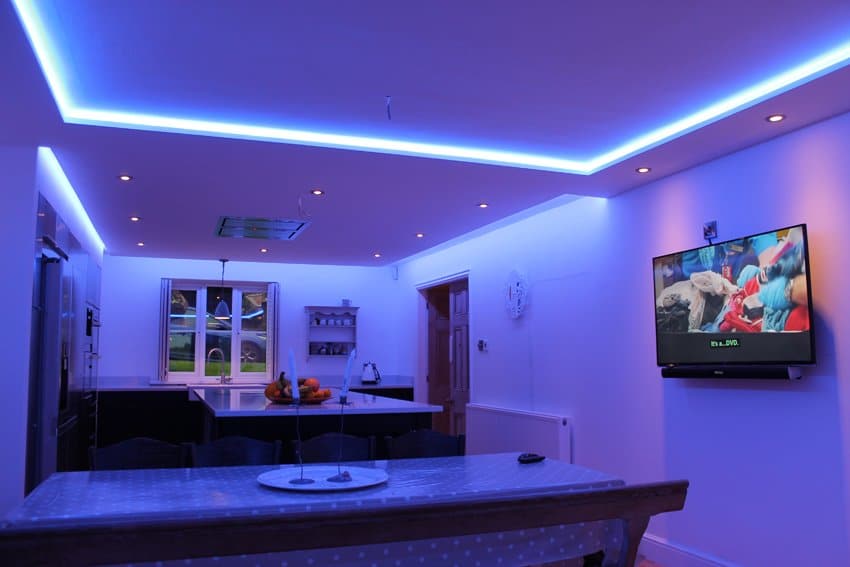
How to Install LED Lights in a Display Cabinet?
Cabinet lighting is crucial for enhancing the visibility and appeal of displayed items. In UAE boutiques, it’s a standard feature.
Recommended Light Types
- Mini LED pucks
- LED strips with CRI > 90
- Magnetic track lighting (new trend)
Installation Workflow
- Determine Purpose: For jewelry, art, or fashion items, warm white lighting (3000–3500K) is ideal.
- Wiring Method: Concealed wiring through drilled holes or adhesive-backed raceways.
- Mount Lights: Fix under shelves or above items. Use double-sided tape or clips.
- Connect Power: Many kits come with plug-and-play drivers.
- Switch Setup: Magnetic, push-button, or PIR motion sensors are widely used.
Installing Emergency Exit Lights
These are critical for safety in commercial premises, hotels, hospitals, and schools across the UAE.
Legal Requirements
- Must comply with the UAE Fire and Life Safety Code.
- Minimum backup time: 90–180 minutes on battery.
- Clearly visible from at least 30 meters.
Key Components
- Exit sign with pictogram
- Rechargeable battery pack
- LED light source
- Auto-test function (for modern units)
Installation Process
- Plan Locations: Over doors, near staircases, and hallway intersections.
- Mounting: Securely attach to ceiling or wall. Ceiling-mounted units provide better visibility.
- Wiring: Connect to a dedicated circuit with a UPS or central battery backup.
- Test and Log: Monthly function test and yearly full-discharge test, documented and available for inspection.
Best Light Installation Service in Dubai
If DIY isn’t your thing, or you’re working on a larger project, professional lighting services are the way to go. Always look for certifications, warranty options, and reviews from verified UAE clients when choosing the installation pros.
Here are some top choices:
- Lighting design, supply, and installation
- Modern indoor and outdoor lighting
- Italian and different lighting fixtures brands
- Continuous support for villa owners and project heads
- Offers villa, shop, and office installations
- Same-day support and DEWA-compliant work
- Custom LED and solar setups
- Focus on smart systems and on-site support
- DMX programming and RGBW automation
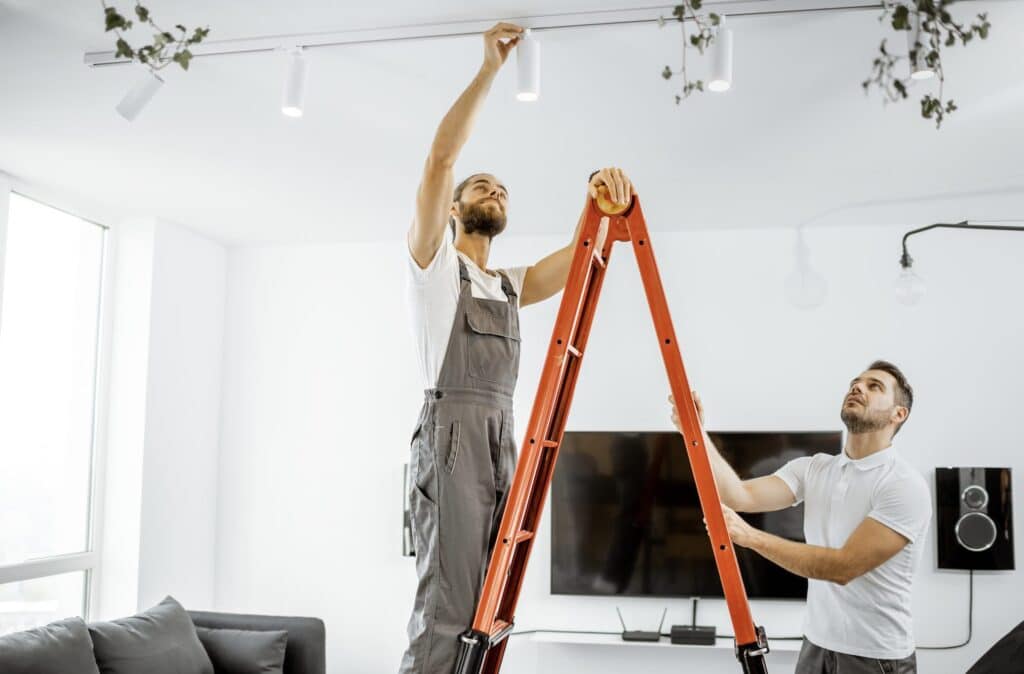
Final Thoughts
Installing lights in the UAE is more than a technical task—it’s a design decision, an energy strategy, and a long-term investment.
From luxurious cove lights in villas to high-efficiency solar lamps on boundary walls, your choices matter.
Whether you’re doing it yourself or hiring professionals, understanding the climate, local codes, and modern technology is key to getting it right.
For complex jobs (like chandeliers or smart systems), always hire a pro in UAE. But for simple DIY tasks (like stick-on LED strips), you can save money with careful planning.
FAQs
Do I need a permit to install new lighting in my Dubai villa?
Yes, especially if it involves electrical rewiring or facade changes. DEWA approval is typically required.
Can I install solar garden lights without an electrician?
Yes. Most solar lights are plug-and-play and safe for DIY, but ensure IP65 rating and secure mounting.
What’s the ideal ceiling height for installing LED strip lights?
Ceilings of 2.7 meters or more work best for layered lighting and concealed strips.
Are emergency lights required in residential properties?
Not legally required, but highly recommended for villas and duplex homes for safety during outages.
How much does a professional light installation cost in the UAE?
Starts at AED 100 per fixture for basic jobs; complex setups like chandeliers or cove lights may cost AED 300–1000+.
Can I control LED lights via a smartphone?
Yes, many systems now offer app control via Zigbee, Bluetooth, or Wi-Fi for dimming, color control, and automation.



